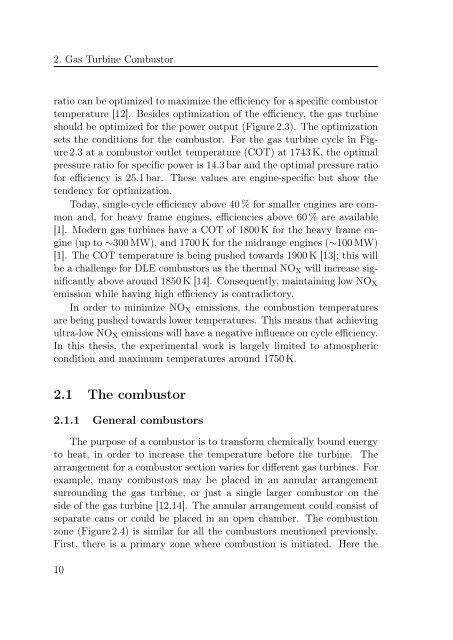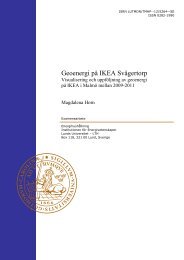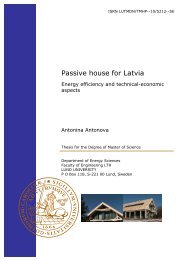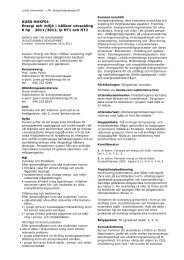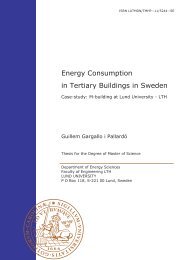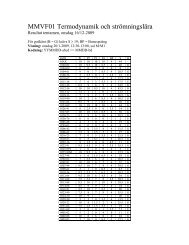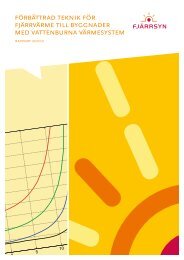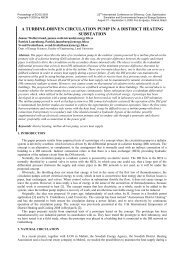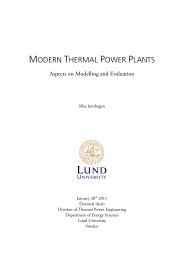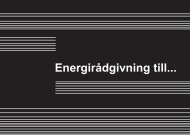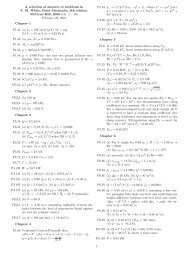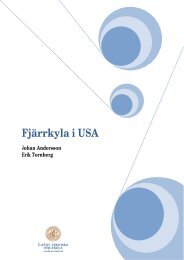investigation of a prototype industrial gas turbine combustor using ...
investigation of a prototype industrial gas turbine combustor using ...
investigation of a prototype industrial gas turbine combustor using ...
You also want an ePaper? Increase the reach of your titles
YUMPU automatically turns print PDFs into web optimized ePapers that Google loves.
2. Gas Turbine Combustor<br />
ratio can be optimized to maximize the efficiency for a specific <strong>combustor</strong><br />
temperature [12]. Besides optimization <strong>of</strong> the efficiency, the <strong>gas</strong> <strong>turbine</strong><br />
should be optimized for the power output (Figure 2.3). The optimization<br />
sets the conditions for the <strong>combustor</strong>. For the <strong>gas</strong> <strong>turbine</strong> cycle in Figure<br />
2.3 at a <strong>combustor</strong> outlet temperature (COT) at 1743 K, the optimal<br />
pressure ratio for specific power is 14.3 bar and the optimal pressure ratio<br />
for efficiency is 25.1 bar. These values are engine-specific but show the<br />
tendency for optimization.<br />
Today, single-cycle efficiency above 40 % for smaller engines are common<br />
and, for heavy frame engines, efficiencies above 60 % are available<br />
[1]. Modern <strong>gas</strong> <strong>turbine</strong>s have a COT <strong>of</strong> 1800 K for the heavy frame engine<br />
(up to ∼300 MW), and 1700 K for the midrange engines (∼100 MW)<br />
[1]. The COT temperature is being pushed towards 1900 K [13]; this will<br />
be a challenge for DLE <strong>combustor</strong>s as the thermal NO X will increase significantly<br />
above around 1850 K [14]. Consequently, maintaining low NO X<br />
emission while having high efficiency is contradictory.<br />
In order to minimize NO X emissions, the combustion temperatures<br />
are being pushed towards lower temperatures. This means that achieving<br />
ultra-low NO X emissions will have a negative influence on cycle efficiency.<br />
In this thesis, the experimental work is largely limited to atmospheric<br />
condition and maximum temperatures around 1750 K.<br />
2.1 The <strong>combustor</strong><br />
2.1.1 General <strong>combustor</strong>s<br />
The purpose <strong>of</strong> a <strong>combustor</strong> is to transform chemically bound energy<br />
to heat, in order to increase the temperature before the <strong>turbine</strong>. The<br />
arrangement for a <strong>combustor</strong> section varies for different <strong>gas</strong> <strong>turbine</strong>s. For<br />
example, many <strong>combustor</strong>s may be placed in an annular arrangement<br />
surrounding the <strong>gas</strong> <strong>turbine</strong>, or just a single larger <strong>combustor</strong> on the<br />
side <strong>of</strong> the <strong>gas</strong> <strong>turbine</strong> [12,14]. The annular arrangement could consist <strong>of</strong><br />
separate cans or could be placed in an open chamber. The combustion<br />
zone (Figure 2.4) is similar for all the <strong>combustor</strong>s mentioned previously.<br />
First, there is a primary zone where combustion is initiated. Here the<br />
10


